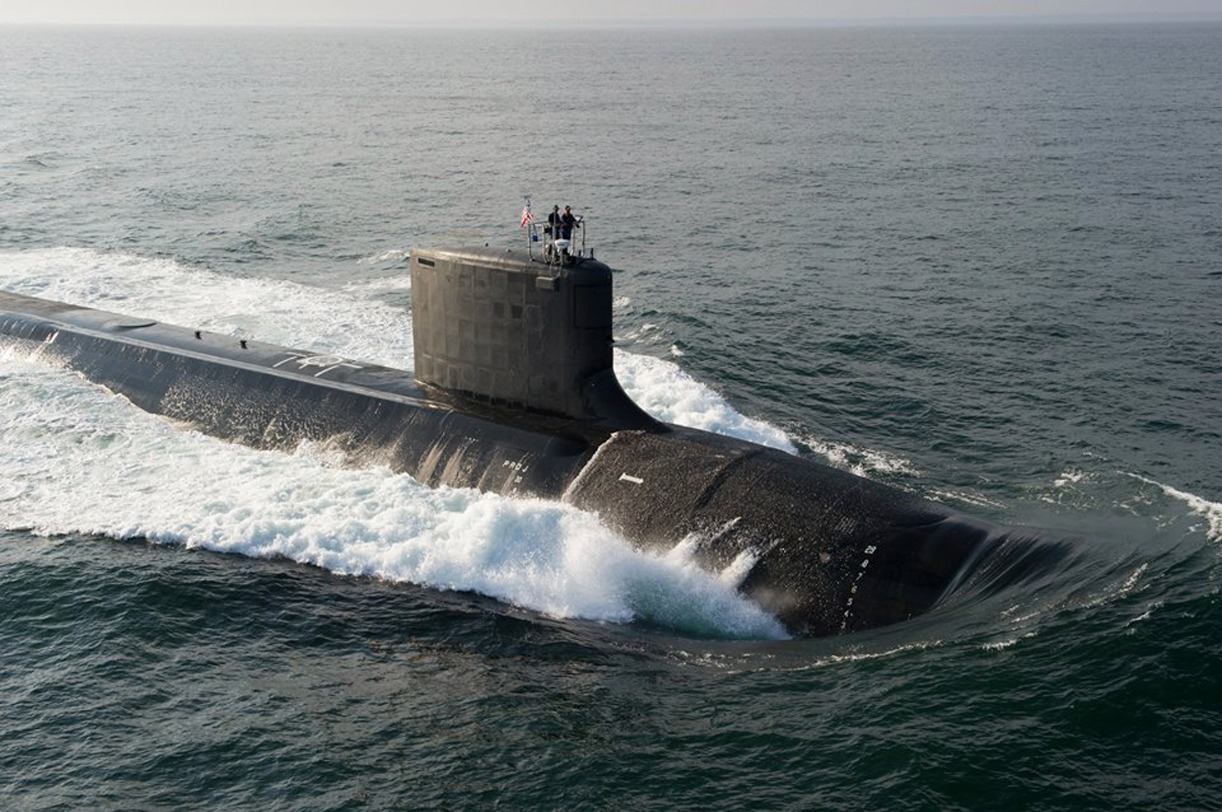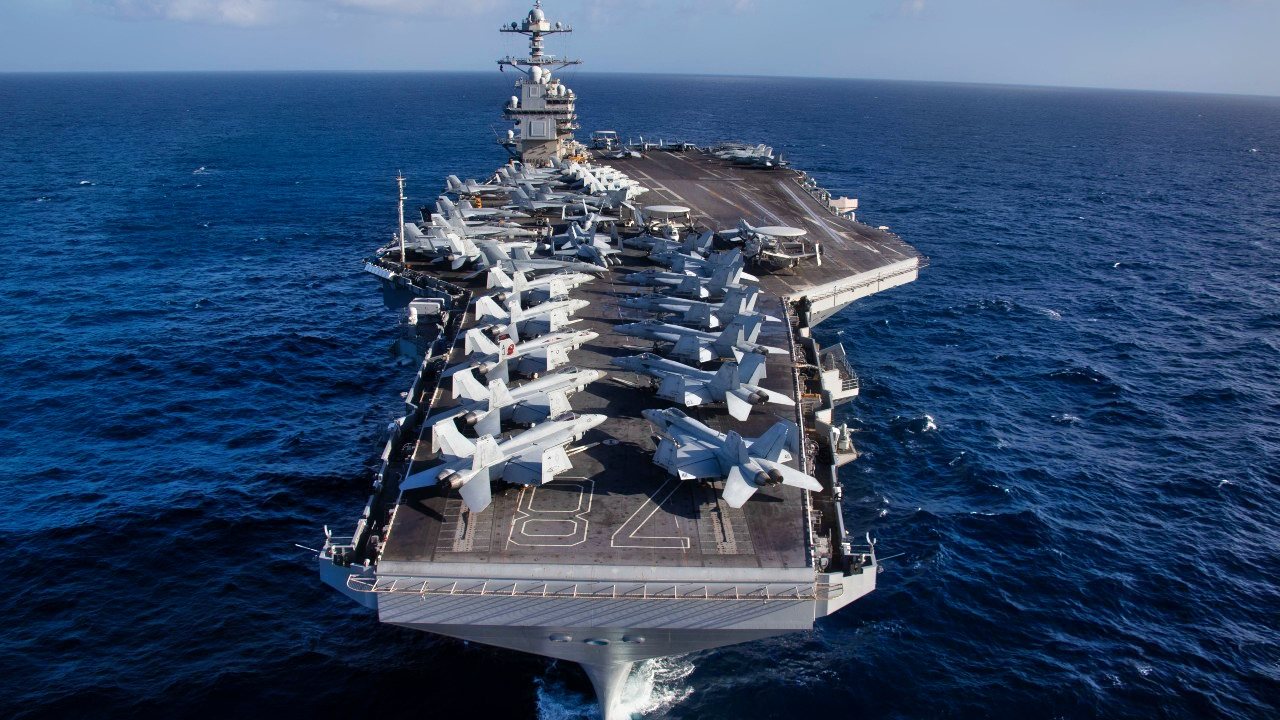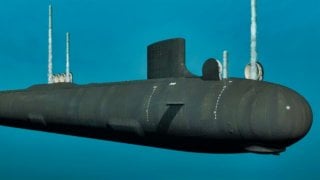The Navy Would Freak: Is the Age of the Submarine and Aircraft Carrier Over?
The U.S. military's reliance on traditional aircraft carriers is becoming increasingly problematic in the age of anti-access/area denial (A2/AD) systems. Submarines, such as the Virginia-class, offer a more viable alternative for power projection.
Summary and Key Points: The U.S. military's reliance on traditional aircraft carriers is becoming increasingly problematic in the age of anti-access/area denial (A2/AD) systems. Submarines, such as the Virginia-class, offer a more viable alternative for power projection.

-However, the Navy lacks a sufficient number of these submarines, hampered by budget constraints and a weak defense industrial base. Additionally, emerging technologies like unmanned underwater vehicles (UUVs), AI-driven detection systems, and advanced satellite tracking could soon make manned submarines obsolete.
-Despite these threats, submarines remain crucial for U.S. naval strategy, especially in potential conflicts with near-peer rivals like China over Taiwan.
Aircraft Carriers and Submarines Both Obsolete?
The face of warfare may be changing but its basic principles remain timeless. Yet, failure to adapt to the changing nature of conflict could lead to defeat. The United States military has become complacent since the end of the Cold War. It has clung onto the tactics and equipment of the previous era of warfare for too long. The aircraft carrier is quickly becoming an obsolete system in the age of anti-access/area denial (A2/AD). Until A2/AD can be overcome, the flat tops will be increasingly useless.
An alternative form of power projection is the submarine. The United States Navy lacks a sufficient number of submarines to sustain itself in a protracted conflict with a near-peer rival, such as China. Its defense industrial base, meanwhile, is sclerotic at best. Still, investments have been made to build new submarines. The Virginia-class submarine is one of the best, new classes of submarines in the US Navy fleet. Sadly, because of budgetary constraints and the limitations of America’s weak defense industrial base, there are not enough Virginia-class submarines available for when a great power conflict erupts.
A Possible End of the Submarine
For all the concerns from submarine advocates like me about the Navy not prioritizing this essential power projection platform enough, there is a chance that, like its aircraft carrier cousins, the submarine may become obsolete soon. That’s because of the rise of unmanned underwater vehicles (UUV). While unmanned aerial vehicles (UAV) get all the spotlight from the press, UUVs are increasingly prevalent in the maritime domain. What’s more, they are an evolving threat against which there is little defense.
As time progresses, the major countries of the world will expand the capabilities of their respective UUV arsenals. UUVs are maneuverable, hard to track, and can be deployed in ways that make it nearly impossible for larger manned vessels to evade their destructive capabilities.
It gets scarier for submarines when that UUV threat is married to rising artificial intelligence capabilities as well as to a growing coterie of advanced detection satellites, such as China’s Project Guanlan (which means “watching the big waves”), which uses sophisticated, multi-colored lasers to track the movement of submarines when they are underwater by monitoring movement of waves.
Many fear that the eerie green laser show over Hawaii that a Japanese research team recorded on January 28, 2023, was one of these laser submarine tracking satellites on display. As for artificial intelligence, a US, AI-driven satellite made history as it was able to identify and track hundreds of “dark vessels” just based on information that various satellites collected on the Earth’s oceans. The same techniques can be applied by an advanced military, such as America’s or China’s, to hunt and kill US submarines.
One study found that the entire concept of manned submarines would be obsolete by 2050, given the technological advances mentioned above. Of course, one can never know what the future will hold.
The Great Power Rivalry
What is certain is that, in the remainder of the 2020s, there is a great power war brewing. The United States is not in the most advantageous strategic position. Submarines today are highly important and may prove to be decisive in any great power conflict—especially with China over Taiwan.

Still, submarine enthusiasts like me must be aware of the dangers of letting drone technology developments, or the enhancements of artificial intelligence and spy satellites dissuade US war planners away from using submarines as they should be used in combat. Whatever machine apocalypse may be on the horizon, it is not yet here. Until UUVs, AIs, and laser satellite tracking of subs is a reliable feature, American submariners should not expect to be kept out of fighting.
Until that day, however, US submarines should stay in the fight.
About the Author
Brandon J. Weichert, a National Interest national security analyst, is a former Congressional staffer and geopolitical analyst who is a contributor at The Washington Times, the Asia Times, and The-Pipeline. He is the author of Winning Space: How America Remains a Superpower, Biohacked: China’s Race to Control Life, and The Shadow War: Iran’s Quest for Supremacy. His next book, A Disaster of Our Own Making: How the West Lost Ukraine, is due October 22 from Encounter Books. Weichert can be followed via Twitter @WeTheBrandon.
Image Credit: Creative Commons and Shutterstock.


